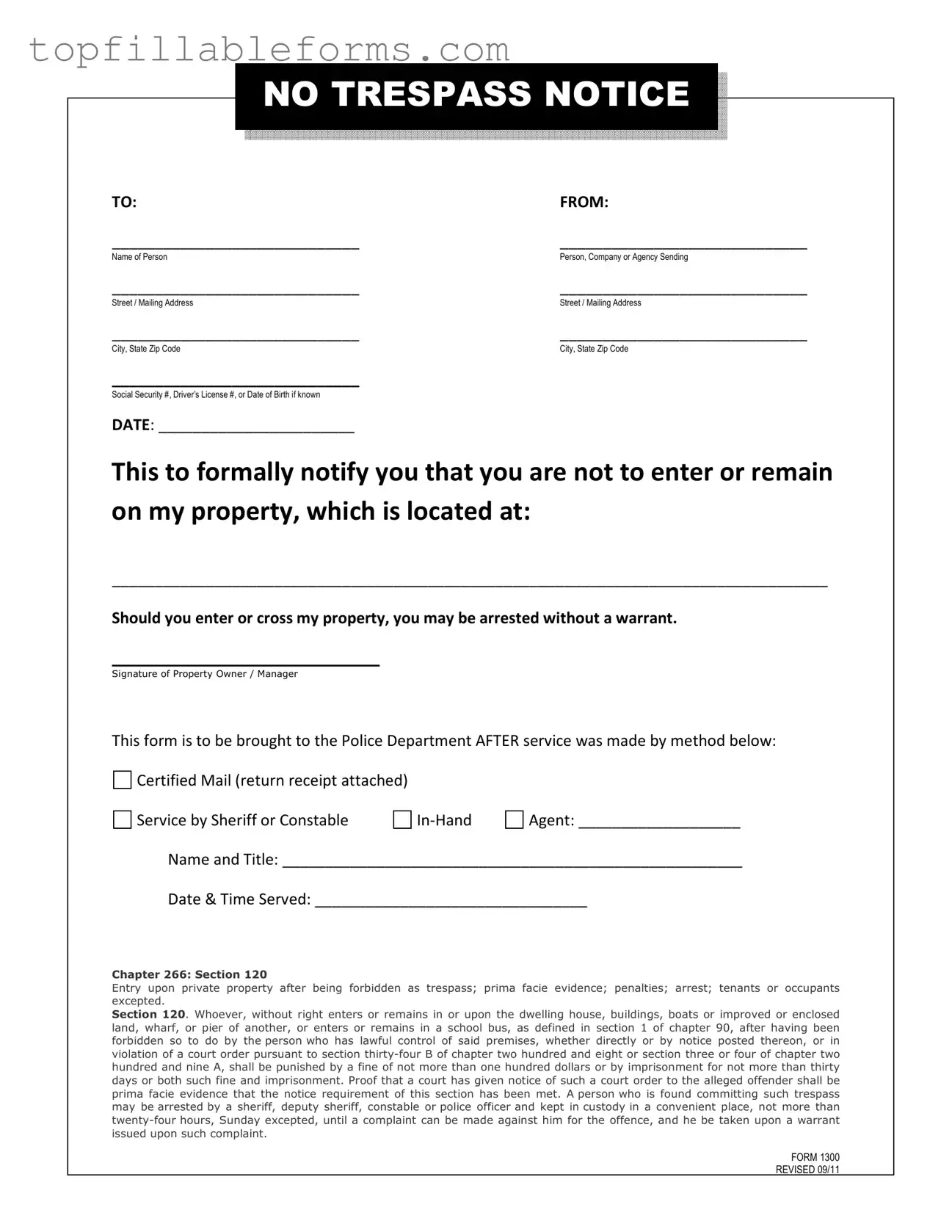Printable No Trespassing Letter Form in PDF
A No Trespassing Letter is a formal document that informs individuals that they are prohibited from entering or remaining on a specified property. This letter serves as a warning and can be used to take further legal action if the terms are violated. By providing clear instructions on how to deliver the notice, the form ensures that the property owner's rights are protected.
Open No Trespassing Letter Editor Here

